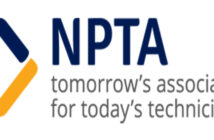PestTech 2015 held at its usual National Motorcycle Museum venue on Wednesday 4 November, provided a comprehensive and varied range of talks. We review what was on offer including new takes on some familiar subjects and the latest updates on more familiar topics.
| The Asian hornet – should we be worried? The day kicked off with a presentation entitled The Asian hornet – should we be worried? by Julia Coats of the Animal and Plant Health Agency at Sand Hutton, near York. Her message was a very clear – Yes we should be worried! One queen turned up in the south of France some 10 years ago as a stowaway in a consignment of pottery. Ten years on and these insects now span the country and have spread into Spain and Belgium. Julia warns that it is but a matter of time before they arrive in the UK. The problem with Asian hornets? They predate honeybees and can decimate a hive in less than a day! Legislation & practical solutions to badger problems Legislation protecting badgers limits what can be done but with a bit of care and ingenuity solutions can be found. Sett entrances can be relocated, subsiding paths/roads can be reinforced, badgers can be encouraged to move to new setts or different parts of a sett via one way gates (under licence). In extreme circumstances they can be live trapped and relocated. Back to trap John set the scene by describing how the Pests Act 1954 laid down the government’s intention to regulate spring trapping. As ever Acts of Parliament are relatively immoveable and tend to be written to be future proof by excluding detail. That detail is provided in the more flexible ‘statutory instrument’. For spring traps, that’s the Spring Traps Approval Order. This has gone through several incarnations since the 1950s, the latest being in 2012. Even the latest version has already been amended and a substantial review to accommodate the Agreement on International Humane Trapping Standards is planned next year. Having set the regulatory framework, John went on to describe the “34 + 2” approved traps. These range from rare and valuable collectors pieces, to the more ingenious and innovative, along the way taking in the familiar Fenn, Magnum and Kania traps. Heat treatment for bed bug control Jeremy described current methods of heat treatment as labour and time intensive. Standard equipment is heavy and the need to lift beds onto a groundsheet prior to treatment, means that treatments require two technicians. It also takes a significant time to raise the temperature of a standard hotel bed to the lethal temperature for bed bugs. These constraints limit a two person team with one set of kit, to two treatments a day. Secomak’s product, the Blue Mantis dispenses with the need for a ground sheet under the bed by way of a heated and weighted skirt that according to Secomak keeps the heat in. In addition, by constructing the Blue Mantis in separate modules each weighing less than 25kg, the entire exercise can be set up and operated by one technician. The equipment is designed to boost the core temperature very quickly – 30 minutes. The fact that the ‘kill temperature’ has been reached is verified by way of two strategically located sensors. Secomak claims that these innovations enable a single technician to undertake four rather than two, discrete bed treatments in a day. Savings can be enhanced further via a monthly leasing scheme, obviating the need to purchase what is inevitably an expensive piece of equipment. Food for thought! No kill pest control |
|
|
| Pest professionals are already doing no-kill work such as proofing and deterring birds from nesting on clients’ roofs. When it comes to bigger pests such as urban foxes, there is plenty of evidence that killing urban foxes is a pretty useless tactic as all that happens is another fox moves into the empty territory. John’s solution for customers that don’t want foxes in their gardens is to use his knowledge of fox behaviour to find ways to make the gardens unattractive to them. | ||



 Elaine Gill
Elaine Gill John Bryan
John Bryan Jeremy Smith
Jeremy Smith

